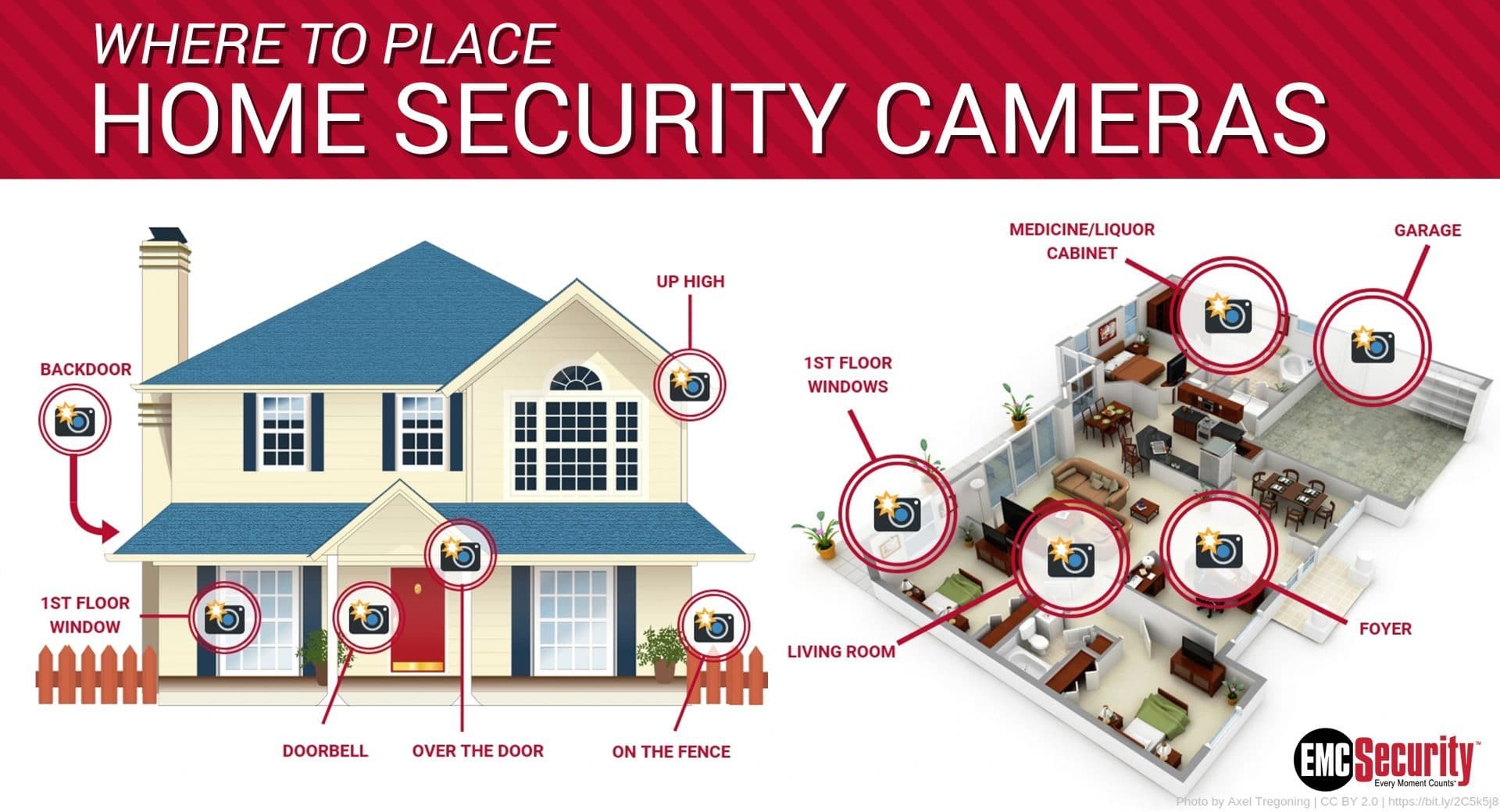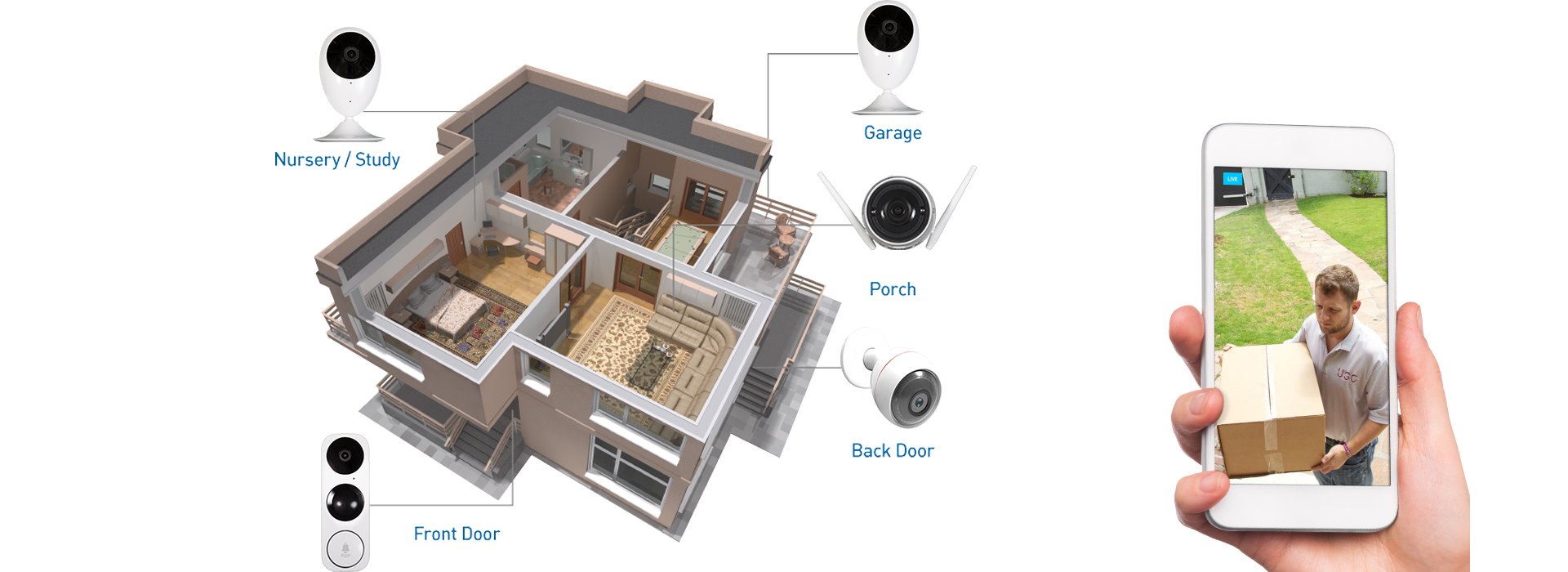Guide For Placing Your Home Security Cameras

It’s no secret that having home security cameras can help you avoid or reduce the likelihood of your home being burglarized, while simultaneously keeping you, your family, and property safe.
However,
Regardless of the type of security camera you choose, their overall success is dependent on where you choose to place them inside and outside of your home, which makes knowing where to place them incredibly important.
Deterring or catching criminals is only possible when your cameras are positioned in the right locations. As such, we’ve compiled a list of four home security camera placement tips so you can know where to install home security cameras to maximize its effectiveness.
TOPICS:
#1. Ideal Placement for Home Security Cameras
#2. Things to Consider When Placing Your Home Security Cameras
#3. Common Security Camera Installation Mistakes
#4. Home Security Camera Placement Laws
#1. Ideal Placement for Home Security Cameras
Well planned arrangements of your security cameras play a crucial role in providing wide-coverage surveillance. So how should you decide where to place your home security cameras?
The following recommendations for camera placement are based on statistical research.
• Front Door – nearly 34% of all burglars enter through the front door
• Back Door – approximately 22% of burglars enter through the front door
• Off-Street Windows – 23% of the burglars enter through a rear window
Read more on how cameras can help you feel safer at home >>
#2. Things to Consider When Placing Your Security Cameras
Prior to installing a home surveillance system, be sure to maximize its effectiveness by asking the following questions:
• Where do you think you actually need security cameras?
• Where are the most obscure areas inside and outside of your home?
• Are there any entrances (doors, windows) that would appeal to thieves?
• Have you or a previous owner ever experienced a break-in?
• If so, when and where did it occur?
Each of the proceeding considerations
In addition, security cameras run the risk of being tampered with if someone is determined enough to commit his crime anyway. Ask yourself whether you want thieves to know you have cameras or not. If you do, you may want to consider having cheap fake cameras (dummies) in easy-to-see places and your more valuable cameras hidden, so if a thief tampers with the visible cameras, you’ll have them on tape using the hidden security camera while they commit the crime.
Are your cameras secure? Learn more >
#3. Common Mistakes When Placing Security Cameras
Both indoor and outdoor security camera placement play a major role in determining whether your home security will yield optimal results. Here’s a look at the most common mistakes to avoid when considering where to place home security cameras.
1. Forgetting to Secure Your Cameras
One of the biggest mistakes that homeowners make is not securing their security devices, which leaves them vulnerable to tampering. So, where should you place your outdoor home security cameras to avoid possible sabotage? A good rule of thumb is to put the camera 9 feet above the ground which will help minimize tampering and keep it safe from destruction.
It’s worth noting that placement of your indoor security cameras may differ from that of those on the outside of your home since outdoor security cameras are more susceptible to damage from harsh weather conditions or vandals.
2. Overestimating the Cameras Abilities
Having clear objectives for your camera’s purpose and performance are key to measuring its results. You need to decide what goals you want to accomplish when your camera to perform when considering placement. Homeowners frequently overestimate the camera’s abilities to do things like pick up someone’s face, license plate, and the house across the street all at once. However, poor planning makes complicate feat such as these, difficult, if not impossible — which is why mapping out a diagram is important to ensure that every camera plays a role in capturing multiple angles.
3. Positioning Each Camera at Top Height
Many homeowners falsely assume that positioning their cameras at the highest point of their property is a wise choice because it provides a full view of the outside of their home. And while there
4. Insufficient Lighting
Regardless of where you position your home security cameras, it’s important to be mindful of how poor lightly can negate all of the
5. Narrow Field of View Cameras
In an effort to help soften sticker shock, many homeowners invest in less expensive cameras, which often lead to a
#4: Comply with Rules for Home Security Camera Placement
Last but not least, be sure to comply with security camera placement laws when deciding where to position your cameras. Avoid legal actions from concerned neighbors by complying with local, state and national laws when considering where it is legal to put surveillance cameras.


